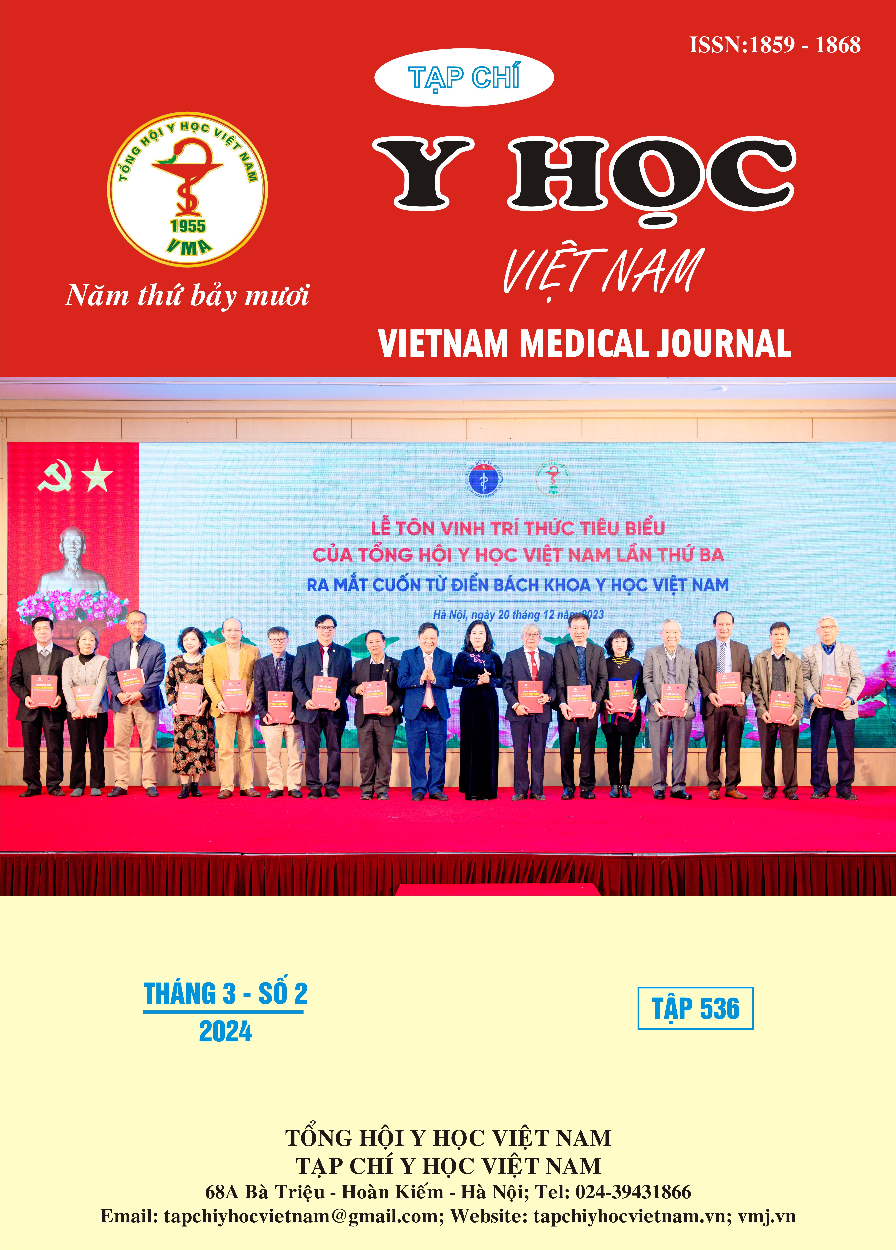THE CHANGES OF THE ScvO2 INDEX IN CHILDREN AFTER OPEN HEART SURGERY AT THE VIETNAM NATIONAL CHILDREN'S HOSPITAL
Main Article Content
Abstract
Background: The imbalance between oxygen supply and the body's need for oxygen is one of the causes leading to some complications in resuscitation after open heart surgery. Low ScvO2 index is one of the valuable indicators in predicting some major events after open heart surgery. Objectives: Survey on the value of ScvO2 index at different times after open heart surgery in children with congenital heart disease at the VietNam National Children's Hospital. Methods: The study was conducted on 119 congenital heart disease patients undergoing open heart surgery in order to investigate the distribution of ScvO2 concentrations by the times, weight and RACHS-1 score, time of aortic clamp, time of cardiopulmonary bypass at 4 time points: immediately after leaving the Surgical Cardiac Intensive Care Unit (T1), after 6h (T2), after 12h, after (T3), after 24h (T4). Results: ScvO2 index were the lowest at T2 after 6 hour arive ICU (54.42±12.76%), decreased at T3, T4 with p<0,01; ScvO2 index loss was lower in the group under 5kg at time T2, T3 and T4 with p<0.05; ScvO2 index at time T2 decreased lower in the group with high Risk adjustment for congenital heart surgery (RACHS-1≥3) with p <0.05. Conclusion: ScvO2 index was lowest at T2 time after surgery, ScvO2 index lower in group under 5kg and group with high RACHS-1.
Article Details
References
2. Tamas Breuer et al. (2007), "N‐terminal probrain natriuretic peptide level inversely correlates with cardiac index after arterial switch operation in neonates", Pediatric Anesthesia. 17(8), pp. 782-788.
3. Patrick S McQuillen et al. (2007), "Regional and central venous oxygen saturation monitoring following pediatric cardiac surgery: concordance and association with clinical variables", Pediatric Critical Care Medicine. 8(2), pp. 154-160.
4. MaríaRosa Pérez-Piaya et al. (2011), "Levels of N-terminal-pro-brain natriuretic peptide in congenital heart disease surgery and its value as a predictive biomarker", Interactive cardiovascular and thoracic surgery. 12(3), pp. 461-466.
5. Marco Ranucci et al. (2010), "Central venous oxygen saturation and blood lactate levels during cardiopulmonary bypass are associated with outcome after pediatric cardiac surgery", Critical care. 14, pp. 1-10.
6. Victória Helena Stelzer Rocha, Paulo Henrique Manso và Fabio Carmona (2021), "Central venous oxygen saturation/lactate ratio and prediction of major adverse events after pediatric heart surgery", Brazilian Journal of Cardiovascular Surgery. 36, pp. 736-742.
7. Michael D Seear, Jennifer C Scarfe và Jacques G LeBlanc (2008), "Predicting major adverse events after cardiac surgery in children", Pediatric Critical Care Medicine. 9(6), pp. 606-611.
8. T Suemori et al. (2017), "Changes in cerebral oxygen saturation and haemoglobin concentration during paediatric cardiac surgery", Anaesthesia and Intensive Care. 45(2), pp. 220-227.


